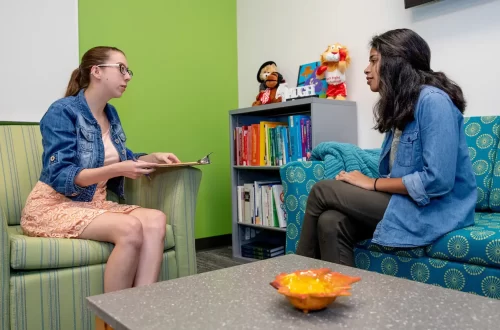We’re all familiar with the archetypal ‘broke uni student’. They live off two-minute noodles, whinge about the cost of expensive textbooks and party until 3 am. I’ve even heard it said that poor uni student days are a rite of passage: everyone goes through them and it is just part of an authentic uni experience. You’ll have a laugh about it one day!
However, there is something deeply wrong about romanticising this archetype. When we sentimentalise financial hardship, we become apathetic to the very real and debilitating problem of poverty.
We jeopardise the future of our society every time student poverty is dismissed as the norm. This is because our future is tied to the success of our students and their ability to learn skills and contribute. It is their dedication to research and innovation that forges new directions and helps us better understand ourselves and our universe.
In 2016, according to the Australian Bureau of Statistics (ABS), there were 1.3 million people enrolled in Australia universities. As our ‘third largest export industry’—estimated to be worth $21.8 billion and providing 130,000 jobs—the education sector needs to be protected to ensure future economic viability for Australia.
However, this article will show that a large proportion of Australia’s student population is in financial distress or uncertainty and thus experiencing a significant deterrent to undertaking tertiary education.
Understanding the Problem
Conducted approximately every five years since the mid-1970s, the Australian University Student Finances Survey provides illuminating reports on the financial state of university students studying in Australia. The most recent survey was conducted in 2012.
The 2012 survey uncovered that two-thirds of students enrolled in Australian universities were experiencing financial distress, representing a 12-percentage point increase on the previous 2006 survey (p. 8). Particularly worrying was the finding that close to one in five students would regularly go without food because they could not afford it (p. 7)!
Two-thirds of full-time domestic students had an income less than $20,000 per year, while one in five students had an income of less than $10,000 per year (p. 8). It’s worth highlighting that both of these figures are well below the national minimum wage.
It’s becoming increasingly difficult for students to balance their time between rigorous study requirements and finding the income they need to support themselves. In fact, half of full-time undergraduates reported that increased hours at work (to meet income requirements) were detrimental to their studies. A third of domestic undergraduates already miss classes because of work commitments (p. 8).
Although it is beyond the scope of the report to speculate about the student dropout rate, it is not unreasonable to conclude that some students must be leaving their courses for financial reasons.
Difficulties for Students from Low Socio-Economic Backgrounds
Of course, financial strains are particularly pronounced for students from low socio-economic backgrounds. The report noted that there was an ‘increasing polarisation between the “haves” and the “have-nots” ’ in the 2012 survey (p. 7). Sadly, students from low socio-economic backgrounds were more likely to go without food and miss class for work commitments.
Research already suggests that ‘poor Australian students are about three years behind in their schooling compared with their richer peers’. This is already a bad start for Australia’s most disadvantaged students: their academic potential can be stunted by financial circumstances even at a primary school level. We are in real danger of seeing this systemic disadvantage perpetuated when financial hardship is almost guaranteed through the uni years.
Higher education may soon become inaccessible for academically capable students from low socio-economic backgrounds, despite the loans available for student course fees through HECS-HELP, because the astronomical cost of living is irreconcilable with a student’s meagre income.
As stated in Senator Simon Birmingham’s recent address at the Higher Education Conference: ‘equity and fairness in higher education … also [involves] ensuring successful completion [of degrees], resulting in improved employment outcomes’. For this to happen, students—especially those from low socio-economic backgrounds—must not be left wondering where their next meal will come from.
Living Costs
Let’s consider the above figure further: two-thirds of full-time domestic students operate on less than $20,000 per year, or approximately $385 per week. According to the Australian Government website ‘Study in Australia’, the cost of accommodation alone could range between $85 and $440 per week!
Essential expenses, including groceries, are listed as between $80 and $280 per week. That’s not to mention the cost of gas, electricity and water bills; phone and internet costs; and transport-related expenses. That $385 weekly budget would be quickly devoured with barely enough to cover textbooks.
How do the one in five students who have an income of $10,000 per year (or $193 per week) survive?
Of course, it is worth noting that 40% of domestic full-time undergraduates were reported to have lower living expenses because they received free accommodation (p. 24), presumably at the family home or in accommodation paid for by a family member. But this represents only one group within the sample within the aforementioned report. Postgraduate and international students were far less likely to have these forms of support.
In fact, the widely held assumption that international students are financially secure is completely off the mark. According to Associate Professor Sophie Arkoudis, 25% of international students studying in Australia are experiencing financial difficulties, with some students even forced to forage in dumpsters for food. Student visas permit international students to work up to 20 hours per week; yet unlike domestic students, there is no government assistance to fall back on when work is not available. This is a damning report considering education is Australia’s third largest export industry.
Postgraduate Financial Hardship
For PhD students, financial hardship has the potential to jeopardise their research. In 2008, the ABC published findings from an investigation launched by the Council of Australian Postgraduate Associates and Council for the Humanities, Arts and Social Sciences: the standard PhD scholarship had decreased in worth to about $20,000.
Thankfully, the value of the Australian Postgraduate Award has increased since 2012; it’s currently worth $26,288 for a full-time student. However, at approximately $505 per week, this amount still falls short of the national minimum wage.
Balancing research and the need for a sustainable income may mean ‘many people are sacrificing the quality of their [research] just to survive’.
Jeannie Rea, from the National Tertiary Education Union, termed the years after completing postgraduate degrees as ‘career bottlenecks’. Because of the absence of funding, researchers can be forced to take short-term contracts and experience job insecurity throughout their careers. While heavy teaching loads are undertaken to pay the bills, the expectation for continued research and publication output does not diminish.
Just this month, Universities Australia hosted the Higher Education Conference in Canberra. Thematically titled ‘Gen Next 2017’, this conference aimed at discussing the changing nature of study. National Union of Students president Sophie Johnston spoke about the changing landscape of higher education where students are forced to balanced full-time study with part-time work in order to survive. And that’s not to mention the ‘internships, exchanges and scholarships necessary’ to find employment in the competitive labour market after graduation.
President of the Australian Postgraduate Associations, Peter Derbyshire, spoke explicitly of the financial difficulties for PhD students, who are ‘expected to do the same sized projects that used to take five years in three years, [and are] expected to do it on a stipend that is now below the poverty line’. Both speakers urged for universities to be more considerate of the financial context of their students to protect the sustainability of our education industry.
Government Support
Another means of support for undergraduate students (postgraduate students are not eligible for this support), government Youth Allowance, can provide students with a maximum payment of $437.50 per fortnight: under half the national minimum wage.
Although many students benefit from Youth Allowance, eligibility loopholes deny access to financial support for some Australian students. Many students, who are 21 years of age or younger, are classified as ‘dependents’ by Centrelink.
Parental income, regardless of the financial support they provide to the student, is used to means test students’ claims. A ‘dependent’ (for the purposes of Centrelink) whose parents earn over $51,903 is unlikely to be eligible for the maximum Youth Allowance payment, regardless of whether they live away from home for their studies. And keep in mind the maximum payment is still under half the national minimum wage.
In 2012, the Newcastle University Students Association raised concerns about the inadequacy of Youth Allowance to meet the needs of students. A survey found some students had as little as $20 per day to cover daily living expenses including food and transport.
Increasing Student Debt and Mounting Costs
In addition to increasing living costs, the debts students accrue are also on the increase. In 2014, Education Minister Christopher Pyne unveiled the Coalition’s plans to deregulate universities and charge interest on student loans to ensure ‘students picked up a fairer share of the tab’.
Thankfully, the changes didn’t proceed as originally packaged, as both the marketed cost of degrees as well as the repayable student loan could have dramatically escalated. Student loans today maintain their indexation consistent with CPI. In 2016, the indexation rate was 1.5%: the lowest indexation rate in seven years.
However, there is potential for change in the near future that will mean students may need to be prepared to pay significantly more for their degrees, including raising student contributions for degrees from 40% to 50% and introducing a student loan fee. Senator Simon Birmingham in his recent address at the Higher Education Conference in Canberra acknowledged that changes to university funding are inevitable.
This represents another hit for the struggling university student. Although these loans aren’t repayable until a student earns above the income threshold ($54,869 for the 2016–17 tax year), it’s entirely possible that individuals will be less likely to undertake a university degree knowing they are signing up for years of financial hardship and then a sizable loan to repay.
It’s clear that a tertiary education is becoming more expensive: both in terms of university fees and living expenses.
Penalty Rates
The recent Fair Work Commission’s (FWC) decision to cut penalty rates is ‘another blow to students who are already under financial siege’. A spokeswoman for the National Tertiary Education Union predicts higher dropout rates as financial difficulties escalate.
A student interviewed by the ABC said that this ruling means she ‘will have to work more for less money’ and ‘there’s no other alternative but to continue working Sundays [but now for less pay].’
The Australian University Student Finances Survey has already shown that increased employment (to meet the need for greater income) impacts negatively on students’ university studies. The decision by the FWC does nothing to rectify this issue for university students, but instead makes it harder for them to make ends meet. It’s best understood as a pay decrease: student will need to work more hours to make back what they’re losing in penalty rates.
A spokesperson for the Council of Australian Postgraduate Associations argued that ‘students who cannot financially sustain themselves results in students studying part-time or not undertaking research at all’. This could have devastating consequences for Australia’s research sector.
Help Available
Recognising the financial difficulty students often face, Capstone Editing has joined the fight against student poverty by offering a range of scholarships. The Capstone Editing Laptop Grant for Postgraduate Coursework Students provides one student per year with a grant of $3,000 to purchase a computer or laptop and necessary software.
Equating to a total sum of $3,000, the Capstone Editing Textbook Grant provides one undergraduate student with one $1,000 gift voucher per year for three years.
The Capstone Editing Research Scholarship for Honours Students provides up to $3,000 for one student per year to assist with the costs related to their research project, and the Capstone Editing Conference Travel Grant for Postgraduate Research Students provides up to $3,000 to one student per year to cover the costs of conference attendance.
Capstone Editing recognises that these scholarships will make a difference to only a small number of students, and that wide-reaching change is necessary for both our society and our education system to make higher education truly equitable and accessible to all students.
Conclusion
In a post-mining boom economy, Australia must invest in higher education to secure future economic growth. To cultivate growth in research and innovation, it is imperative that enrolling in university is not a risky financial move for students.
Most profoundly affected by student poverty are those from low socio-economic backgrounds, which only serves to further the widening gap in Australia between rich and poor and exacerbates economic disadvantage. Morally, this is something we are obliged to rectify.
Failure to invest in the education sector will result in a devastating brain drain for Australia: researchers will leave Australia to secure more enticing grants. Losing students represents a devastating loss for the future of the Australian economy.
The ‘broke uni student’ archetype does not have a place in our national mythology. We need to cease romanticising and thus ignoring student poverty: our future depends on it!





